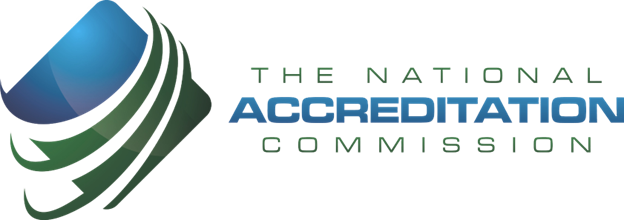About Us
At NAC, we’re building the national infrastructure for a skills-first economy—where workforce training is transparent, data-driven, and directly connected to real employment outcomes. Through our AIHub platform, we empower programs to deliver verified, employer-aligned training that drives economic mobility. Our mission is simple: transform workforce education into a reliable, scalable system where success is measured by the lives improved, not just credentials earned.
Mission
Empowering Skills, Verifying Success
We transform workforce programs through data-driven innovation, leveraging the AIHub as a multi-tiered evaluation and accountability ecosystem that connects training directly to employment outcomes—ensuring every American can access verified, employer-aligned skills training.
Vision
The Operating System for America’s Workforce Future
We envision a skills economy where quality trumps bureaucracy, where real-time data replaces guesswork, and where every training program is measured by the lives it transforms. NAC is building the national infrastructure that makes workforce education as reliable and scalable as the internet—where every NAC approved program sets the benchmark for excellence, innovation drives continuous improvement, and learners consistently achieve verified pathways to economic mobility.

Let’s Meet those Impacted
Board
Our Board brings together a diverse group of leaders with deep expertise in workforce development, education, technology, and public policy.
Innovation Team
The Innovation Team at NAC drives the development of cutting-edge solutions that connect skills training to real-world outcomes.
Frequently Asked Questions
The National Accreditation Commission (NAC) is an emerging programmatic accrediting agency seeking recognition with the Secretary of Education for non-degree and noncredit workforce development programs, utilizing a “Data First” student-centric model that integrates federal, state, industry, and institutional data sets, including available student achievement data to guide the development of innovative workforce development programs.
The Secretary recognizes accrediting agencies to ensure that these agencies are, for the purposes of the Higher Education Act of 1965, as amended (HEA), or for other Federal purposes, reliable authorities regarding the quality of education or training offered by the institutions or programs they accredit.
Postsecondary noncredit and non-degree programs throughout the United States, including distance education and correspondence programs offered at those institutions.
Accreditation is the review of the quality of higher education institutions and programs. In the United States, accreditation is the primary way that students, families, government officials, and taxpayers know that an institution or program provides a quality education.
Accreditation is important for colleges and universities because it is a way to demonstrate that they meet certain standards of quality. Accreditation is a voluntary process required for institutions to qualify for participation in federal student aid programs (Title IV, Higher Education Act (HEA) programs) and garnering visa granting authority from the Department of Homeland Security.
The U.S. Department of Education relies on accrediting agencies to oversee higher education quality. Only institutions and programs accredited by a federally recognized accreditor can provide students with access to federal student aid, including Pell Grants and student loans. Periodically, a subset of the more than 60 federally recognized accreditors come up for review by ED and the National Advisory Committee on Institutional Quality and Integrity (NACIQI). Here is a snapshot of how the accreditor recognition process works.
The National Advisory Committee on Institutional Quality and Integrity is an advisory body that makes recommendations to the U.S. Secretary of Education on matters related to accreditation and the eligibility and certification process for institutions of higher education. It was authorized and reconstituted by the Higher Education Opportunity Act of 2008.
NAC standards are a set of guidelines that program providers use to:
- Design the framework of a training program.
- Align the program with the current demands of the industry.
- Specify the program’s capabilities within its field of training.
- Identify the most effective teaching methods.
- Establish educational protocols for instructors, administrators, and support staff.
- Outline the expected results of the program.
- Assess if the program includes the necessary skills and competencies.
- Evaluate the overall effectiveness of the program.
- Ensure that the right personnel, services, and systems are available to fulfill the needs of the students.
Accreditation in postsecondary and adult education is a pivotal process that serves multiple roles. It acts as a seal of quality for institutions and programs, a catalyst for ongoing enhancement, and a crucial factor for eligibility in financial aid and credit recognition.
Programmatic standardization and accreditation assessment activities have several benefits:
- NAC standards evaluate various aspects of programs, including alignment with industry and skill/competency integration, as well as completion, enrollment, graduation, job placement, and demographic factors like age, race, and economic status, to promote fair outcomes and student success.
- NAC accredits programs that can be pathwayed, stacked, or leveraged for transfer credit or articulation into traditional degrees, including for-credit offerings at accredited institutions.
- Programmatic standardization and accreditation assessment activities lead to lower costs by reducing redundancy, minimizing errors, and reducing program time to market.
- Demonstrating compliance with NAC standards helps your program and institution ensure alignment with industry needs.
- NAC accreditation standards make program interoperability possible, ensuring programs can be offered at multiple locations and tracked uniformly.
- By participating in standardization, your institution can reduce the economic risk of program research, development, and revision activities. Relying on standardized taxonomies and terminologies can also lower overall accreditation costs and time spent on accreditation.
- Alignment with Industry Requirements: NAC ensures programs meet the demands of the job market and equip students with the skills needed for employment. NAC also focuses on risk adjusted metrics and the impact on underserved groups, allowing institutions to tailor programs that lead to gainful employment and upward mobility.
- Program and Course Innovation: Utilizing advanced analytics, NAC identifies necessary changes in courseware and programs to meet industry standards.
- Strategic Planning and Resource Management: NAC aids in program innovation, planning, resource allocation, and outcome tracking.
- Economic Progress: NAC ensures programs contribute to individual economic growth, especially for adults enhancing their skills.
- Educational Accessibility: NAC monitors the alignment of short-term programs with broader educational opportunities, from degrees to certifications.
- Tailored Training: NAC accredits employer-specific training, potentially leading to immediate job opportunities.
- Support Services Evaluation: NAC assesses student support services, vital for the success of all students, particularly non-traditional learners.
- Commitment to Lifelong Learning: NAC evaluates the continuous innovation and adaptability of programs in a changing workforce.
- Community Collaboration: NAC assesses how programs work with local businesses to promote community involvement and economic development.
NAC accreditation promotes cost savings by standardizing processes, reducing errors, and shortening time-to-market. Compliance with NAC standards facilitates cross-border program recognition, enabling transferability and qualification for various certifications and licensure. Participation in NAC accreditation can also reduce accreditation, planning, and R&D costs by utilizing standardized terminologies and program structures.

